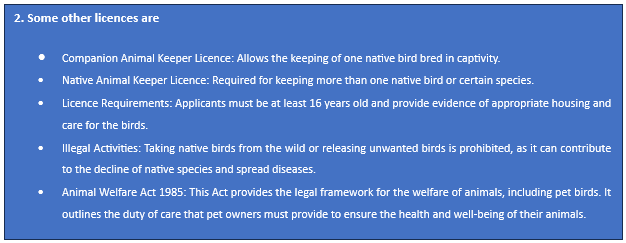- Home
- About Us
- Industry
- Services
- Reading
- Contact Us
Pet Bird Health Market Seen Soaring ~6.14% Growth to Reach USD Billion by 2033, Projects UnivDatos
Author: Ritika Pandey, Research Analyst
May 21, 2025
Key Highlights of the Report:
Technological Advancements: Companies have come forward with advanced innovations such as wearable health trackers, smart feeders, and telemedicine platforms that help to enhance real-time monitoring and remote consultations, improving overall bird health management.
Rise in Pet Bird Ownership: An increasing number of households are adopting pet birds, driven by factors like compact living spaces and the desire for low-maintenance pets, contributing to the market's expansion.
Challenges in Veterinary Care: Customized veterinary services are expensive, and the limited availability of qualified avian veterinarians makes it more challenging to access proper bird healthcare.
Cultural Heritage: There is a whopping demand for organic and natural supplements that include herbal medicines and fortified seed blends, as the pet owners are looking for healthier and more sustainable options for their birds.
Environmental Sustainability Trends: Manufacturers are increasingly offering eco-friendly products, such as biodegradable bird toys and sustainable packaging, aligning with the growing consumer preference for environmentally conscious choices.
According to a new report by UnivDatos, the Pet Bird Health Market is expected to reach USD Billion in 2033 by growing at a CAGR of 6.14% during the forecast period (2025-2033).
People prefer to keep birds as their pets as they provide enjoyment and companionship. Pet birds are all the nectar-feeding birds that can be kept legally in captivity, such as in a cage. There should be proper guidelines set for the basic requirements of birds, which promote humane and considerate treatment of birds, and inform the people of their obligations for the care and management of caged birds. The caged bird's basic needs include readily accessible food, accommodation that protects from harsh and humid weather, prevention and treatment of diseases, injury, and unwanted behavior. The United Kingdom Farm Welfare Council doesn’t directly govern pet birds; however, it addresses freedoms of animal welfare.
Freedom from hunger and thirst through ready access to freshwater
Freedom from discomfort by providing a suitable environment, including shelter
Freedom from pain, injury, and disease through prevention or rapid diagnosis and treatment.
Freedom to express normal behaviour by providing sufficient space, proper facilities
Freedom from fear and distress by ensuring conditions and treatment that avoid mental suffering
Some laws aim to ensure the humane treatment of birds, prevent the spread of avian diseases, and regulate the trade and movement of birds.
There are certain laws that seek to guarantee the humane treatment of birds, prevent the spread of avian diseases, and regulate the trade and movement of birds.
Environment Protection and Biodiversity Conservation Act 1999 (EPBC Act)
Protection of Native Species: Under the EPBC Act, native bird species are protected, and it is illegal to take, keep, or trade them without appropriate permits.
Import and Export Controls: As per this Act, the import and export of native and non-native bird species should be promoted to prevent the introduction of diseases and protect biodiversity.
Native Bird Keeper Licences: In New South Wales, individuals must obtain a Native Animal Keeper Licence to keep native birds as pets. This licence is issued under the Biodiversity Conservation Act 2016.

Trade and Movement of Birds
Licensing for Trade: Under this Act, the trade and movement of native birds have been strictly proscribed. Individuals and businesses must adhere to regulations who are involved in the sale or exchange of birds.
Movement Restrictions: Transporting birds across state or national borders may require permits and adherence to quarantine protocols to prevent the spread of diseases.
Good care and treatment of birds is important, owners should have skills, knowledge, and understanding to take care of the birds and be able to recognize their appearance and behaviour. Further owners can join the bird club or read books about them to enhance their knowledge of pet birds.
Key Offerings of the Report
Market Size, Trends, & Forecast by Revenue | 2025−2033.
Market Dynamics – Leading Trends, Growth Drivers, Restraints, and Investment Opportunities
Market Segmentation – A detailed analysis By Product, By Application, By Distribution Channel, By Region/Country
Competitive Landscape – Top Key Vendors and Other Prominent Vendors
Get a Callback
